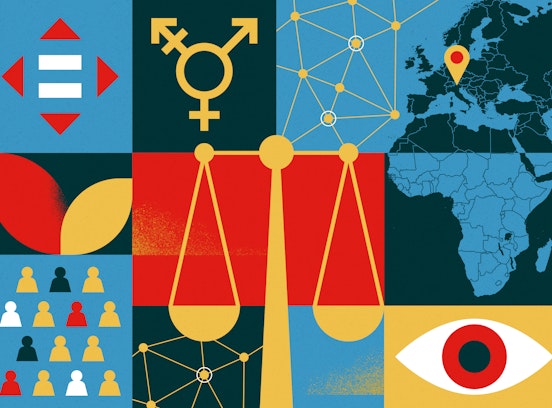Center for Advanced Studies - News & Events - Why Buttons Matter - Repurposing Facebook's Reactions for Analysis of the Social Visual
Why Buttons Matter - Repurposing Facebook's Reactions for Analysis of the Social Visual
A new study published in the International Journal of Communication
Since Facebook has expanded its standard like-button to five additional response options, new possibilities for science to analyze images shared in social networks, to examine emotional perception and to reveal digital affect cultures open up. A recent study published in the International Journal of Communication, based on an analysis of the public Facebook page of the Syrian Revolution Network, showed that shared image content boasts certain patterns that are in turn related to certain combinations of reactions. Among the authors are Marloes Geboers, Nathan Stolero, Livia Van Vliet and Arran Ridley as well as Anna Scuttari, Senior Researcher at the Center for Advanced Studies of Eurac Research.
The study "Why Buttons Matter: Repurposing Facebook's Reactions for Analysis of the Social Visual" uses a totally new methodology, which is why it makes an important contribution to the study of visual communication in social networks. On the one hand, quantitative metrics were used to measure specified emotions. More precisely: The Facebook buttons were treated in the evaluation like answer scales in a questionnaire. In addition, the visual content was interpreted qualitatively in order to capture the combination of different stated expressions of emotion.
Facebook offers a simplified grid of emotional statements and provides only one choice. This forces users to possibly combine more complex emotional states into a predefined emoji. As the researchers found out, emojis for sadness and anger, as well as those for sadness and love show correlations in collective use. Combinations of certain emotions could also be related to certain subjects or objects, for example to children. Images of children provoked different reactions: sadness and love were combined.
By being able to react directly to images in social networks, individuals provide a self-assessment of the extent to which they are influenced by images of war. An emotional alignment is a sign of homogeneity in the collective reaction to a social media content, whereas polarization of reactions can reflect different affect cultures reacting to the same content.
The complete article in the International Journal of Communication is available in Open Access:
PDF: https://ijoc.org/index.php/ijoc/article/view/11657










